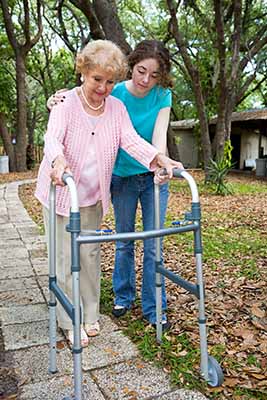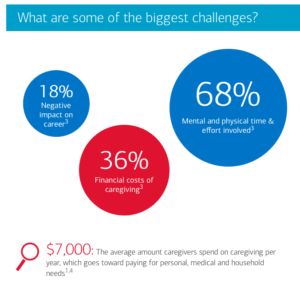 For decades, we’ve heard how women in the workplace were unable to keep pace with their male colleagues. We thought this was partly due to the demands of maternity leave and ongoing parenting responsibilities. Why then, when children left the home, did this pattern seem to continue into the later years of these career women? Enter the “elder-care crisis”, as described in a recent New York Times article.
For decades, we’ve heard how women in the workplace were unable to keep pace with their male colleagues. We thought this was partly due to the demands of maternity leave and ongoing parenting responsibilities. Why then, when children left the home, did this pattern seem to continue into the later years of these career women? Enter the “elder-care crisis”, as described in a recent New York Times article.
The author addresses the rising trend of women shifting from child care to elder-care. Because many our aging Americans are unable to care for themselves, their care often falls to their wives and daughters. This results in reduced hours at work, lower paychecks and sometimes leaving their jobs altogether.
In case you’ve missed the statistics:
- 25% of women aged 45 – 64 are caring for an older relative
- 14% of women aged 35-55 are caring for an older relative
- 10% of these women have reduced time at their paying jobs
- 6% of these women quit their jobs
You can read more about the research here and here.
Who Provides the Care for our Elderly Family Members?
A graph in the NYT article dramatically illustrates that after rising for half a century, the labor force participation rate among prime-age women began to decline sharply in the early 2000’s – right around the time the time the elderly share of the population began to rise sharply.
It’s not a stretch to connect the dots. About 14 million older Americans currently can’t live independently and care for themselves. Unless they’ve purchased long term care insurance (LTCi), the burden of care weighs predominantly on their wives and daughters.
In his book “Who Will Care for Us?” Paul Osterman estimates that there are about 21 million family members caring for an adult relative for no pay. By 2040, he predicts demand for such care will rise to 34 million.
There are a variety of costs associated with caregiving tasks, from financial to emotional. This is one image provided by Merrill Lynch:
You can click here to find additional easy-to-read images.
Unlike the Boomers currently caring for their parents, their millennial children will not have as many siblings to help them care for their parents. Future elderly will also live longer, suggesting that there will be a lot of caregivers well into their 50’s juggling work with caring for children and parents.
The New York Times article ends on an unfortunate note, concluding that “private insurers are not the solution.” If you’ve been following me for any time at all, you know I am strongly in favor of using private insurance as a successful solution. In fact… I’ll take a deeper dive into this in a future blog post.
In the meantime, if you’d like to proactively prepare for the likelihood of needing some form of elder-care, please click here to receive your free LTCi quote.


 Thanks for visiting my site! I like hearing from you!
Thanks for visiting my site! I like hearing from you!
Leave a Reply